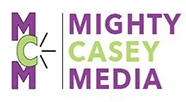You can’t turn around these days without running into a headline about the Internet of Things (IoT). It seems as if everything from your car to your cardiac pacemaker is talking to everything else on the internet, and we’re all about to Die (because hackers) Live longer (because hackers) If you’re confused about the whole IoT thing, and what it means to healthcare, you’re not alone. As buzzphrases go, “Internet of Things” is having its Andy Warhol 15 minutes of fame on an auto-replay loop right now … but what will the actual interconnectedness of the technology we use in our daily lives deliver to us in the way of helping us live better/healthier lives? Will we find ourselves living out a cautionary “I, Robot” sci-fi tale as we become slaves to our IoT robot masters? The answer is … (wait for it) … “it depends.” And what it depends on is how we humans build and interact with our robot mast … um, the Internet of Things. The biggest challenge is that healthcare, as an industry, sees the people it serves – we’ll call those people “patients” – as the product, not the customer. Which, I think, goes a long way to explaining why this most human of all industry sectors – the one we seek help from when we get sick – has so resolutely resisted becoming digitally accessible/approachable to its customer base. If you need a ride, Uber. If you want to shop, Amazon. If you want dinner, Yelp or BlueApron. If you need a doctor’s appointment … well, you can call the office to make an appointment. Or use the portal (if there is one). Or hit up the local urgent care. But there will be plenty of waiting, and it’s unlikely to be a tech-assisted process…
I’ve spent a good portion of the last two months on the healthcare equivalent of the political stump – called the “rubber chicken circuit” in political circles. Thankfully, there was no actual rubber chicken served during these sojourns, although there was the incident of the seductive breakfast sausage, followed by my solo re-enactment (off stage) of the bridal salon scenes from the movie “Bridesmaids.” I will draw the veil of charity (and gratitude for travel expense coverage) over the details of that incident, and just advise all of you to stick to fruit, cereal, or bagels at conference breakfasts. ‘Nuff said. My original editorial calendar plan was to turn this into a series of posts, broken down by focus into technology and clinical categories. However, since a big part of my goal in standing on the barricades at the gates of the healthcare castle, waving my digital pikestaff in service of system transformation, is breaking down silos … well, go grab a sandwich, and a beverage. This is gon’ be a long one. HIMSS Patient Engagement Summit In early February, I headed to Orlando for the first Health Information and Management Systems Society (HIMSS) Patient Engagement Summit. I was asked to participate in two panel discussions, one titled “Patient Perspectives: The State of Engagement,” the other “Can We Talk? The Evolving Physician-Patient Relationship.” Both were moderated by Dr. Patricia Salber, the bright mind behind The Doctor Weighs In. Being a person with no letters after her name (like Elizabeth Holmes [update: she’s trash, so redacted] and Steve Jobs, I’m a college dropout), I’m used to showing up at healthcare industry events and being seen as something of a unicorn fairy princess. That’s how people commonly called “patients” are usually viewed in industry settings outside the actual point of care. Healthcare professionals/executives are so used to seeing us as revenue units,…



